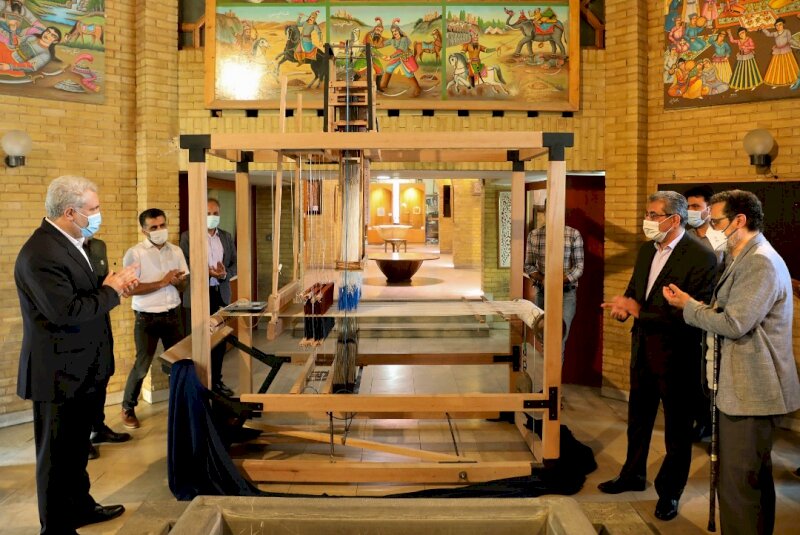Tourism minister unveils brocade-weaving machine

TEHRAN – On Sunday, Cultural Heritage, Tourism, and Handicrafts Minister Ali-Asghar Mounesan attended the unveiling ceremony of a domestically-made brocade-weaving machine.
The household brocade-weaving machine, which is locally known as “Dastgah-e Zaribafi”, was designed and made by a team of Iranian under the auspices of the Research Institute of Cultural Heritage and Tourism, CHTN reported.
The traditional versions of Zaribafi machines, which are used in workshops measure ten meters in length and four meters in width. And they do not fit in typical houses and apartments at all.
The household weaving machine, which can be installed in a room covering six square meters, has been made to help revive the ancient craft that is on the verge of oblivion.
Brocade is a class of richly decorative shuttle-woven fabrics, often made in colored silks and with or without gold and silver threads. Brocade is typically woven on a drawloom. It is a supplementary weft technique; that is, the ornamental brocading is produced by a supplementary, non-structural, weft in addition to the standard weft that holds the warp threads together. The purpose of this is to give the appearance that the weave was embroidered on.
Ornamental features in brocade are emphasized and wrought as additions to the main fabric, sometimes stiffening it, though more frequently producing on its face the effect of low relief. In some, but not all, brocades, these additions present a distinctive appearance on the back of the material where the supplementary weft or floating threads of the brocaded or broached parts hang in loose groups or are clipped away. When the weft is floating on the back, this is known as a continuous brocade; the supplementary weft runs from selvage to selvage. The yarns are cut away in cutwork and broché. Also, a discontinuous brocade is where the supplementary yarn is only woven in the patterned areas.
The value of Iran’s handicrafts exports stood at $120 million during the first eleven months of the past Iranian calendar year 1399 (March 20, 2020 – February 18, 2021). Ceramics, pottery vessels, handwoven cloths as well as personal ornamentations with precious and semi-precious gemstones are traditionally exported to Iraq, Afghanistan, Germany, the U.S., the UK, and other countries.
AFM
Leave a Comment